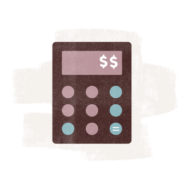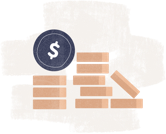This article was updated June 5, 2020 to reflect changes in the Paycheck Protection Program Flexibility Act of 2020.
Missed out on EIDL & PPP Loans? Nav can connect you will small business lenders that can meet your needs.
It took a while to get here, but the SBA has provided some additional PPP guidance for seasonal businesses to calculate the maximum loan amount for seasonal employers.
How Does the New Guidance Affect the Calculation of the Maximum Loan Amount?
The previous guidance allowed that, a seasonal employer my determine its maximum loan amount for purposes of the PPP by referencing to the employer’s average total monthly payments for payroll “the 12-week period beginning February 15, 2019, or at the election of the eligible [borrower], March 1, 2019, and ending June 30, 2019.”
Because this didn’t address the many seasonalities faced by numerous seasonal small businesses, the SBA revised the guidelines to allow for the individual circumstances of these businesses.
“Under this interim final rule issued pursuant to 1109 of the Act, a seasonal employer may alternatively elect to determine its maximum loan amount as the average total monthly payments for payroll during any consecutive 12-week period between May 1, 2019 and September 15, 2019.”
This will allow the business owner to best choose the 12-week timeframe that best represents his or her payroll when the business is active and in full employment.
What If the Business Was Dormant or Not Fully Operating on February 15, 2020?
The primary eligibility requirement for a PPP loan is that your small business needed to be in operation on February 15, 2020. As a seasonal business, you may have been in business but out of season or dormant during that time. Meaning your payroll in February or March may not be representative of your payroll when you had full employment for your busy business season. With that in mind, here is how the SBA answers that question:
“[I]n evaluating eligibility, a seasonal business will be considered to have been in operation as of February 15, 2020, if the business was in operation for any 8-week period between May 1, 2019 and September 15, 2019.”
In other words, if you were doing business between May 1, 2019 and September 15, 2019, you will fit the eligibility criteria.
Other Eligibility Requirements
Other than the exceptions for seasonal business as outlined above, the criteria for qualifying otherwise remains the same. Qualifying small businesses are generally defined by the SBA as:
- Businesses with fewer than 500 employees (with some exceptions)
- Businesses that meet the SBA’s industry-based size standard requirements for the applicable NAICS code, which are based either on number of employees or annual receipts (you can see if your business credit reports list your NAICS code by pulling your business credit reports for free on Nav)
- Not-for-profits (except those receiving Medicaid funds)
- Veterans organizations
Franchises and hospitality businesses (NAICS code 72) with multiple locations, even if they have more than 500 employees, may be exempted on a per location basis as well as any businesses receiving financial assistance from a Small Business Investment Company (SBIC).
How Much Can You Apply For?
The maximum loan amount will be the lesser of $10 million and 2.5 times the average monthly payroll costs for the one year period before the loan is made, with consideration for any seasonality-based adjustments or a shorter period for businesses less than a year old.
You Should be Thinking About Loan Forgiveness When You Apply
Although PPP loans come with the most attractive business loan terms most of us will ever see in our lifetimes (1% for 2 years, or 5 years for loans obtained after June 5, 2020), you will probably want to make sure you take the proper steps to ensure that your PPP loan is forgiven. The PPP is intended to allow business owners, including those who are self-employed, to apply for a loan amount 2.5 times their average monthly payroll. The following SBA payroll criteria will help you make the calculation to determine your loan amount as well as what expenses will be forgivable..
Average Monthly Payroll costs include:
- Salaries, tips, and commissions
- State and local employer payroll taxes
- Health insurance premiums
- Employee retirement plans
- Net profit (if you’re self-employed)
The CARES Act SBA Loan Calculator will help you determine how much you may qualify for within the PPP program before you start an application. You can read more about loan forgiveness HERE.
The Requirements Differ Slightly for the Self-Employed
Self-employed individuals without any employees and file IRS Form 1040-C will need to calculate their payroll expense differently. Use net profit for the business from 2019 as reported on line 31 of the Schedule C. You can use up to $100,000 of net profit, divided by 12 to get the average monthly net profit. Then multiply that number by 2.5 to get the maximum loan amount.
If you haven’t filed your 2019 taxes yet, that is OK. You will need to have them prepared though to submit your application. You can read more about applying as a self-employed individual HERE.
Start Documenting Expenses as Soon as You Receive the Funds
PPP funds are intended to cover your payroll expenses for eight week (24 weeks under the PPP Flexibility Act) following the first disbursement of the PPP funds. In other words, the clock is ticking and you need to make sure you document every expense as soon as you receive funds—or you could run the risk of losing the loan forgiveness. The lender, according to the SBA, must make the first disbursement within 10 calendar days after your loan is approved.
Please keep in mind this information is changing rapidly and is based on our current understanding of the programs. It can and likely will change. Although we will be monitoring and updating this as new information becomes available, please do not rely solely on this for your financial decisions. We encourage you to consult with your lawyers, CPAs and Financial Advisors. To review your real-time funding options with one of Nav’s lending experts, please contact us.
This article was originally written on April 28, 2020 and updated on June 25, 2020.



Have at it! We'd love to hear from you and encourage a lively discussion among our users. Please help us keep our site clean and protect yourself. Refrain from posting overtly promotional content, and avoid disclosing personal information such as bank account or phone numbers.
Reviews Disclosure: The responses below are not provided or commissioned by the credit card, financing and service companies that appear on this site. Responses have not been reviewed, approved or otherwise endorsed by the credit card, financing and service companies and it is not their responsibility to ensure all posts and/or questions are answered.